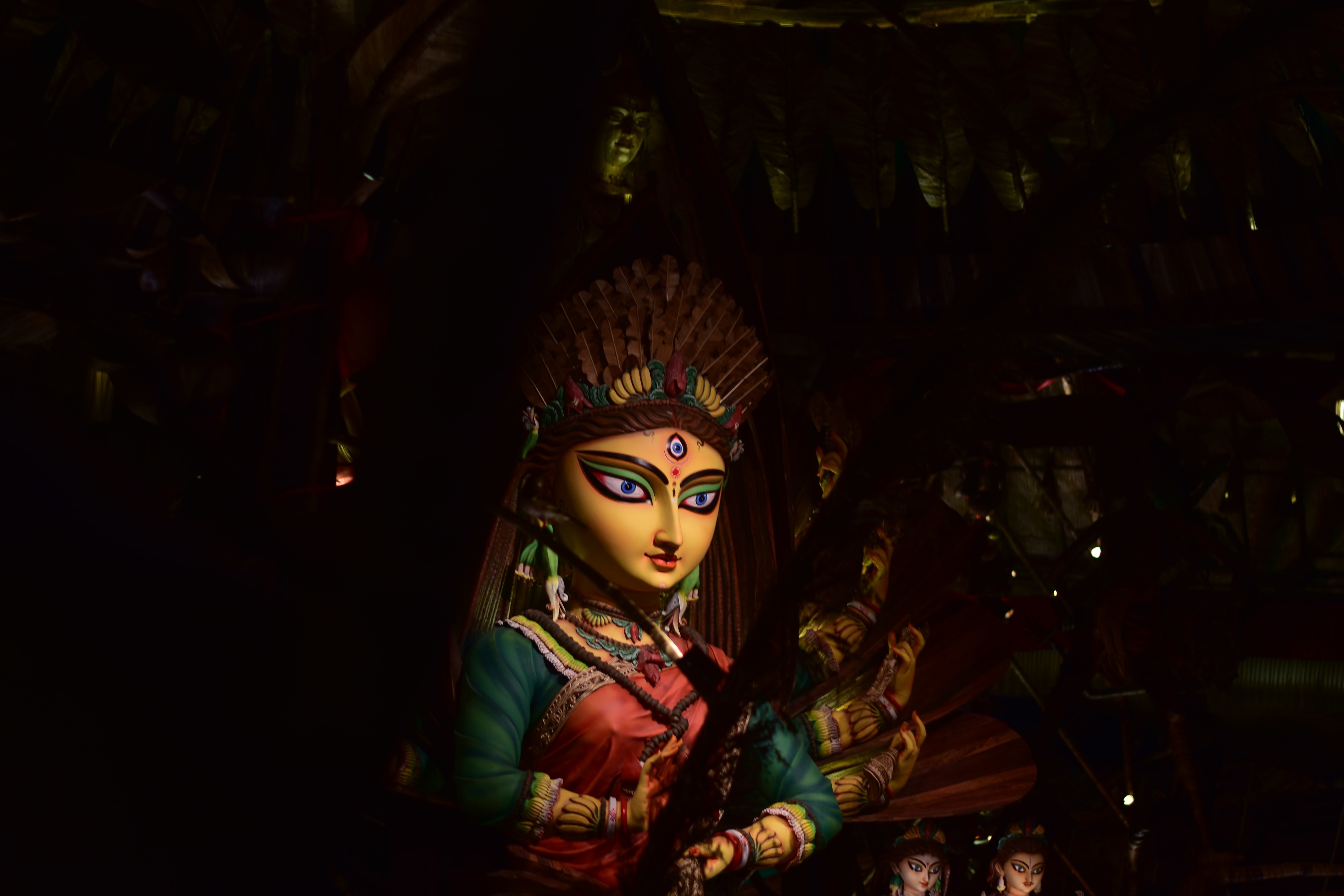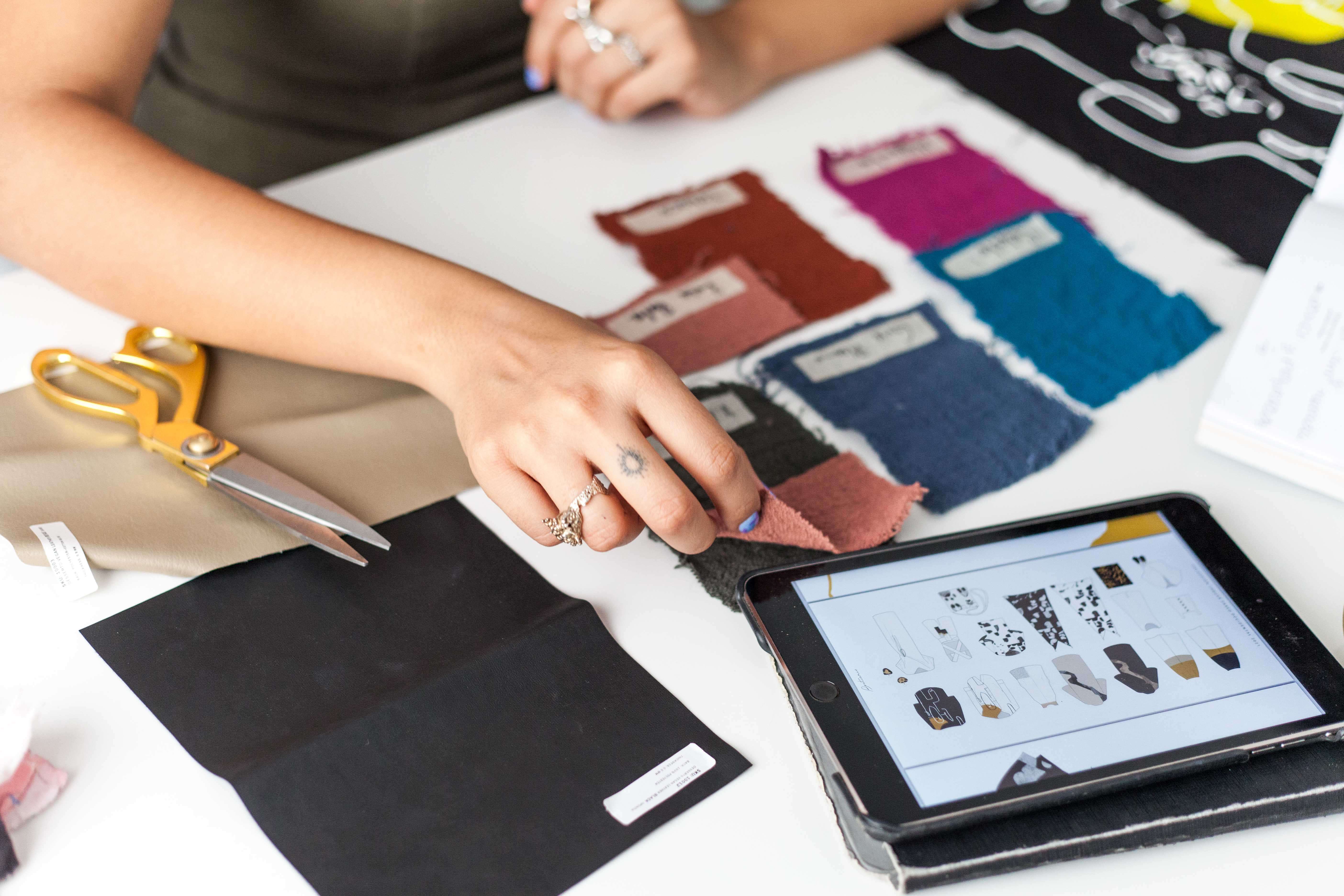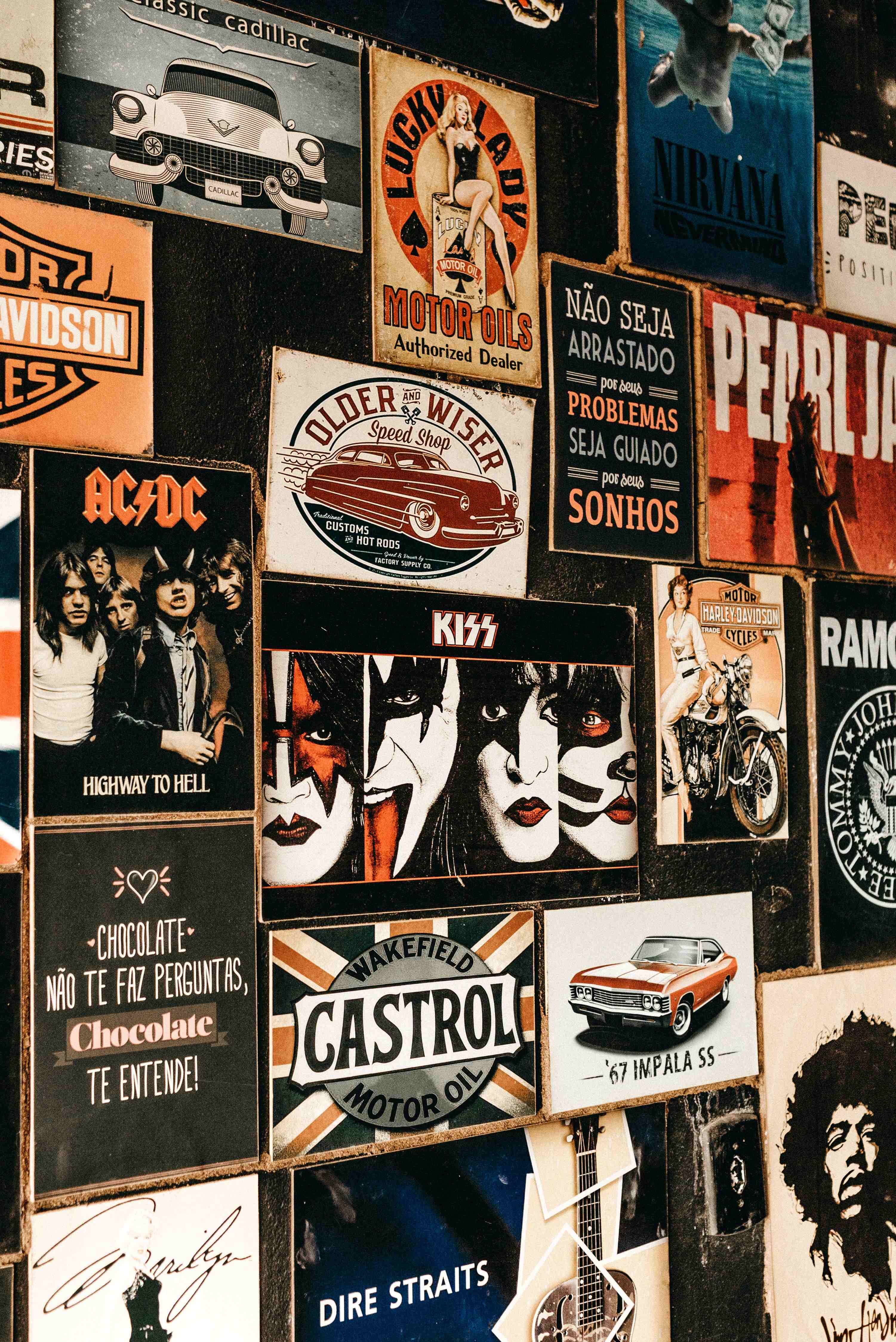What is a designer? A personal experience and learning

We have all heard of the term “Designer” these days. With the advent of social media and increasing awareness of the world around us, we see an influx of designers in the social discourse, hailing from various fields such as fashion, technology, and so on. It seems being a ‘Designer’ is the hottest new trend.
However, if I am to ask you, what is a designer? What would be your answer?
Some of the more predictable answers would be - someone who creates something new. It could be a new piece of avant-garde clothing, a new product such as a phone, a car, or even a house, and so on. Then, naturally, a question comes to mind. What is the difference between a ‘Creator’ and a ‘Designer’? Why not call them creators only?
There are many ways to answer this question. However, I will answer it based on my personal experience in the field of design. It may differ from other mainstream definitions, and some may disagree with my view. But, for the sake of open, public discourse, let’s put my own learnings out there and see if that helps anyone who has been looking for an answer to the question.
Introduction to the World of Creation
I hail from West Bengal, one of the 29 Indian states. Bengalis have a long history of rich cultural heritage. Maybe things are not too bright in modern Bengal today, but we were once revered as great cultural thinkers, having refined taste in arts, culture, music, and literature.

Even from a modernization perspective, we have always been at the forefront of social innovation, whether it was feminism and women’s empowerment - (Bengali women, to this date, enjoy one of the highest levels of education, access to public discourse, and social independence - our Chief Minister being a woman herself and the only one from all the 29 states), working for social good and justice (highest number of well known revolutionaries against the British Rule hailed from Bengal), improving people’s lives (Bengali woman Jnanadanandini Debi, the wife of Satyendranath Tagore - brother of the famous Bengali poet Rabindranath Tagore - popularised the blouses, jackets and chemises and the modern style of the sari which is still a staple of most Indian women) or adopting technology (first thermal power plant to power the city of Calcutta - CESC, oldest police force - Kolkata Police).
This is not a glorification of the state and its people in any way because God knows we have fallen far behind today and have our own problems and issues. Rather, like the growth of a tree is dependent and is affected by the soil it grows on, this background has affected and continues to affect my growth.
Because of their rich background, Bengalis try to maintain their dalliance with art, music, and literature, as much as possible. So, like most Bengali families, it was imperative that growing up, I had to take lessons in music, and art and be adequately versed in poetry and literature (if you have not read Tagore as a Bengali, you will find it hard to access the inner echelons of Bengali culture). And that is the minimum requirement! What this does is give a push to your creativity. You are rewarded for being creative and imaginative. You stand apart from the crowd.

I held on to art a little longer than most of my peers. Growing up, just like any other child, I wanted to create my own world. Art was my way to that world. I envisioned a future where I would be an artist, a creator of sorts, living comfortably in my ideal world, fulfilling my dreams. However, after a certain age, you are somewhat forced to be realistic about your life, and you understand that you also need to sustain yourself. Fulfilling your passion has an obstacle - being born into a Middle-Class family.
So began my search for a viable career that would not stifle my passion and creativity, but also provide me with a stable financial future. Concerned about his son’s future, my father also looked around and came up with a suggestion that changed my life forever, and still affects my life to this date - joining a design school.
A well-educated, intelligent man, who has seen his fair share of life and its varied struggles, he clearly knew me more than I did. He understood that I had negligible skill or interest in science, engineering, medicine, or any of the other mainstream fields, and would not do well if I chose my career as my peers did. In order to make a better life for his somewhat wayward son, he chose the field of design.
Now, keep in mind that it was 2013-14. In India, at least, in the Middle-Class discourse, designing, in any field, as a job or viable career option, was not even a topic that was entertained, in comparison to behemoths like Medicine, Engineering, Architecture, or Government jobs. Jobs in design were few and far between, and general knowledge about this field was less than adequate.
So, giving in to the basic human nature of trusting big names (something we all do - like Apple), my father, against the vehement protest of my mother, advised me to try for admission to the Bachelor programs of NID (National Institute of Design) and NIFT (National Institute of Fashion technology). Even to this date, these two institutions are considered the best Design schools in India, and some might say, in South East Asia. They are called the IITs of Design, with the majority of well-known and successful Indian designers being their alumni.
I failed to get through NID’s entrance test twice but aced the NIFT test. While preparing for these two tests, my father found out that one of his colleague’s son had gotten into NID, and as a way to understand more about these schools, arranged a call between us. Out of all the things the NID undergraduate told me, one excerpt stuck to my mind that still serves as the baseline for all my design endeavours.
“Design is not art. You don’t just design something. Design, in its essence, is the process of solving a problem. It is not imagination. It is science.”
Design - A method to solve everyday problems
Yes, it is that simple a definition. Design solves problems. You may create anything, but if that thing solves a certain problem, or serves a certain purpose, then it is not just creation. It is design.
And, you, my friend, are a designer.
If you look around in nature, you will know exactly how good of a designer Nature is. Everything is made to solve a certain problem, or serve a survival purpose, whether it’s the animals, fishes, insects, tiniest microorganisms, landscapes, or trees.
Does an animal need to move fast? The animal's body is designed to be aerodynamic, agile, and lightweight, e.g., Cheetah. From head to toe, that animal is designed to move fast.
Does a living being need to hide often? Its body is blessed with a naturally occurring camouflage design, e.g., Chameleon.

Does a living being need to survive inside water? Its body is designed to have specific organs to filter oxygen from water, as well as specially designed limbs that help the living move easily, e.g., fish or any other aquatic animal.

Even most products of daily usage take inspiration from nature. Ever wonder why automobiles always have two headlights on each side instead of one, and almost always have four wheels? That’s because most animals and living beings are designed to have two eyes and four limbs. Ever wondered why an aeroplane has two wings and tail fins? Because birds, the only living beings designed to be able to fly, have two wings and tail fins.
And human beings are the pinnacle of perfect design. Every part of our body is so well designed that it has allowed us to dominate the food chain, and mind you, in the entire history of life, very few species have come even close to what we have achieved as a species, thanks to superior design.

So now that you understand what design is, what is, then, a designer?
A designer, then, by the above definition, is a creator who solves problems. The things that the designer makes serve a certain purpose and help a certain audience.
Today, almost every field requires designers. Whether it’s the garment industry, automobiles, all kinds of devices, and so on, you need a designer who can make the product just right for the intended audience.
My learnings as a designer
I started my career as a fashion designer and was a part of the couture industry. Couture, in layman’s terms, refers to being custom designed, e.g., a dress that is designed for just one person, or a certain purpose, in a certain way, having certain features.

What it essentially meant is that you have a client. The person, let’s say, a 30-something woman, who may hail from a wealthy family, maybe a celebrity or something similar, wants to attend a certain event. It is a one-time thing, and she wants the dress to showcase her in the best possible way. So you say, it’s just a dress! Everyone wears something. How difficult is that?
Well, as I had to handle the clients personally, I can confidently say it is that difficult. Difficult, if you look at it from a ‘non-designer’ point of view. So you take in the designer’s point of view. That’s when you get a whole new perspective on the matter.
You ask - What is the problem?
Problem - This is a fashion gala event. She is a popular actor who has been invited as a guest of honour. That means all eyes will be on her. She needs to look beautiful, confident, and powerful and should always be the centre of attention. However, she doesn’t anymore follow the body goals of her youth, whether due to age, or other reasons. No matter how much we try to accept body positivity, human beings are designed to be competitive. So, how do you put her there in a way that makes her leagues above the newer actors, and other people who may be younger and are more attuned to the latest trends in body fitness?
Solution - You design a dress that helps accentuate her body’s defining features, her skin colour, and her overall body shape. It is comfortable to wear, so the inner lining is made with soft skin-friendly fabric. It should be powerful, so the main fabric should be strong, rigid, and capable of holding shape. Additional strengthening is done, without any effect on mobility, by adding pastings, linings, and boning. The colours, the pattern, and the surface design should represent her status, her culture, and her background.
And there it is, a dress that perfectly encapsulates who she is and ultimately makes news all over the world.
The crucial part of this process is research, followed by constant trial and error. In most cases, there is only one perfect design, and a designer’s job is to be as close to that design as possible. The closer he is, the better the design serves the purpose. Everything matters. For a dress, the fabric, the lining, the thread, the stitch, the colour, the silhouette or shape, the embroidery, and so many other things all come together to make it perfect. So in essence, designing something is a clever combination of some base elements and materials, in such a way that everything serves its purpose properly

Later on, in my career, I transitioned into Graphic Design. Yes, the materials have changed now. Earlier, I was using stitching machines, body forms, and threads to design. Now I use a laptop and a couple of software to create designs that uplift brands and market them to the wide public.

But did the essence of Design change? No, it didn’t.
You again start with the problem.
Problem - A new startup, with innovative technology, wants to market itself as a trailblazer in the public discourse. They want to be seen clearly with reverence and attention, like Apple, on all forums of public discussion whether it's social media, print media, or word of mouth. They have competitors with similar technology, just like Apple has Samsung, OnePlus, and so on. So how do they go about it?
Solution - In comes you, the Graphic Designer, skilled in the use of various software like Photoshop, Illustrator, etc. You plan an entire branding strategy which includes social media posts, videos, and motion graphics. You plan for print media such as billboards, posters, flyers, and booklets. You plan for mockups. You aim to flood the visual space of the public with media that highlights the best the brand has to offer.
So you research. You try to find the key aspects of the technology that are different from the other competitors, and if not completely different, you plan to showcase them in a way that has not been done before.
E.g., Apple (because we all know how good they are at branding their products)
Apple AirPods were the first to feature Spatial Audio for the common audience. They were pricey but do you remember the ads and the print posters that you saw for the product?
An outline of a man wearing AirPods, a recurring and increasing repetition of the same outline which slowly merges in the background, and just a simple text - AirPods with Spatial Audio. Most ads were similar and had the same abstract design.
Today, a lot of other brands have managed to launch spatial audio for their earbuds, but the design of the poster and the motion graphic and video will forever occupy the public discourse.
But what made it so appealing? Let’s dig in. In my personal opinion, it has all to do with visual communication. Human beings from the very beginning have always been visual creatures. We see and understand things faster than reading and understanding them.
So Apple chose to select certain colours that engage a certain emotion in the mind. In this case, their colour combination creates a sense of tranquillity, focus, and at the same time a, sense of feeling unburdened by anything around us, something that users would want to have when they wear AirPods and tune in to the spatial audio, which in essence allows the sound to feel like it is coming from a fixed source no matter where the user turns their head. It is configured perfectly according to the user's head movement, allowing for accurate tracking and movement of the audio.
It doesn't end there. In most posters, the human being is relegated to the background as a solid silhouette. They appear two-dimensional, flat, and filled with solid colours, mainly dark ones. The only three-dimensional object in focus, almost always in the centre and highlighted, is the AirPod. They have their trademark white colour and almost immediately stand out.
The person seeing this poster now quickly connects peace, tranquillity, focus, and freedom, as well as music, with that small AirPod. It is that effective! Now, the person will try to have her hands on an AirPod as soon as possible, no matter the cost, and no matter how many other audio devices he has ever had. And once he gets it and tunes in, the hardware does its job, and the connection that he formed when she first saw the ad, gets confirmed by the experience and becomes a permanent foundation. Emotional connections like these cannot be broken easily. Even if the hardware fails tomorrow, or doesn’t live up to his mark, she will still opt for a newer version of AirPods, and would rather wait for a long time, rather than ever give any other product a chance.
There is a reason that every new product launch from Apple draws in people like moths to the flame. People will wait for days in from the stores (much less today due to the advent of online delivery platforms) to get their hands on the new product.
And that is how you should create the branding for the startup. You need to understand how the technology helps its users, and how the brand does it, and then use design elements like colour, typography, lines, and so on to craft a graphic that engages the users on an emotional level and forms those crucial connections. Despite what you may think, bombarding people with dozens of images, texts, and long lines hailing its features, (like the billboards of coaching institutes) is not graphic design.
The purpose of your product, the branding graphic - social media post, or billboard poster is to make the viewer connected to the product on a deep emotional level. It should make them forget other similar products (as Apple does so seamlessly), engage curiosity in their mind by telling a story and poking their curiosity, and persuade them to at least give the product a chance, if not go crazy with it. If the branding makes them think that the product is worth the money, they will pay for it.
Now, the hard part is figuring out how to do it.
There is no easy answer. In my years of experience, I found out the best method is always to have detailed discussions with the client, and do extensive research on the product, human tendencies, market trends, detailed competitor analysis, and human behaviour. You need to have the strongest possible grasp of design principles. You need to know how a certain design element affects the human mind. Everything matters. You need to do thorough surveys, if necessary, especially, if it is a new App, as in the case of UX Design.
Then, you do a lot of trial-and-error, mockups, drafts, ideation, testing, etc.
However, after everything is done, the fact remains that you, as a designer, have solved a problem with your creation. That is what design is, at least in my humble opinion gathered throughout my work and life experiences.